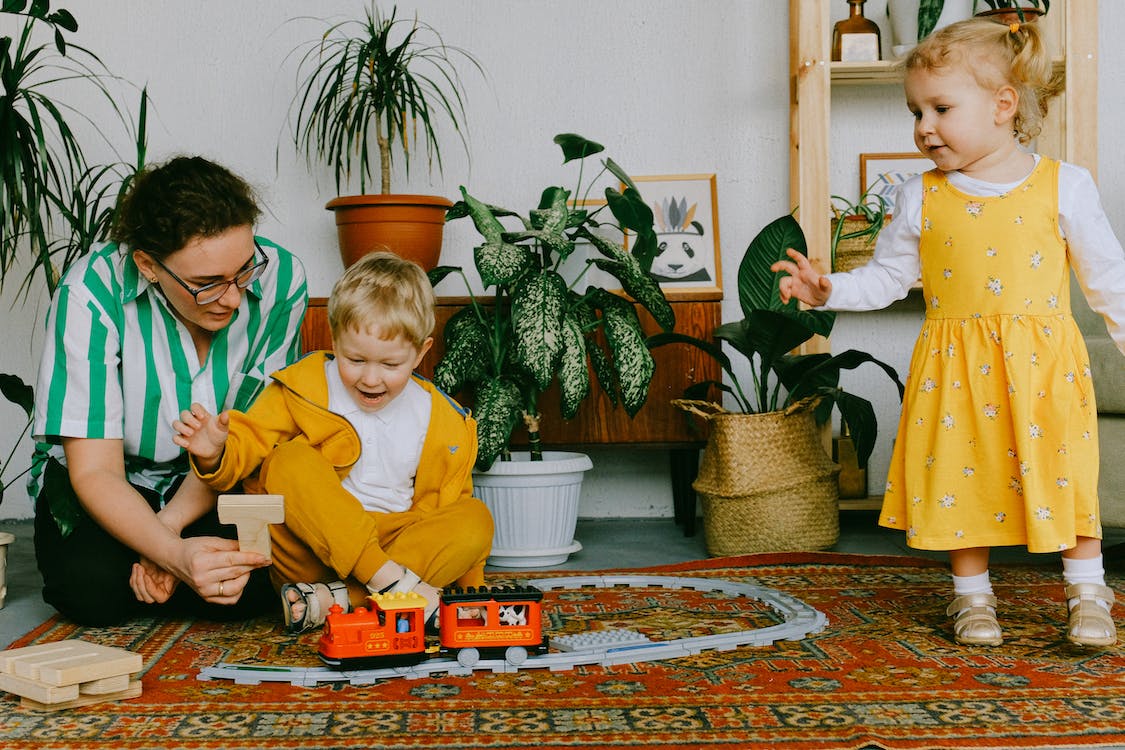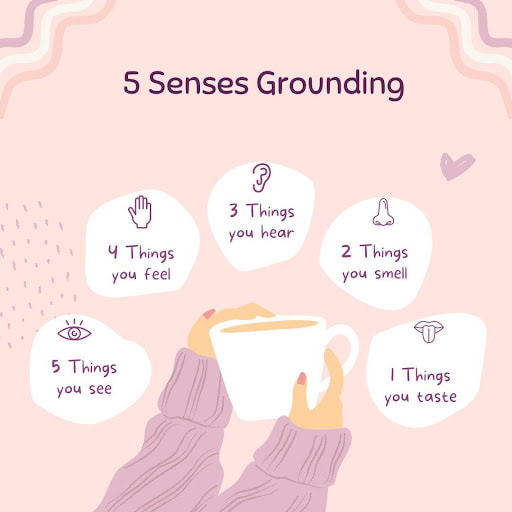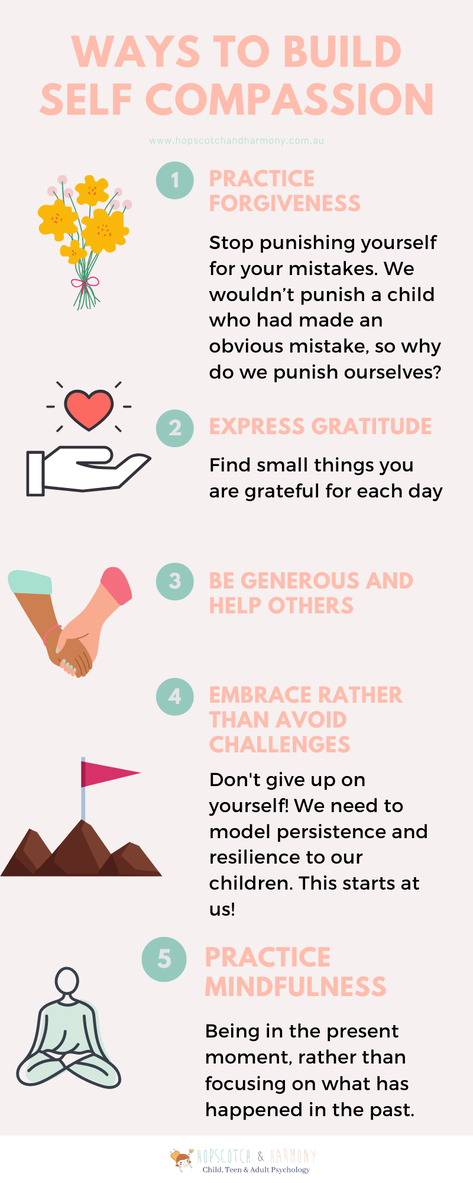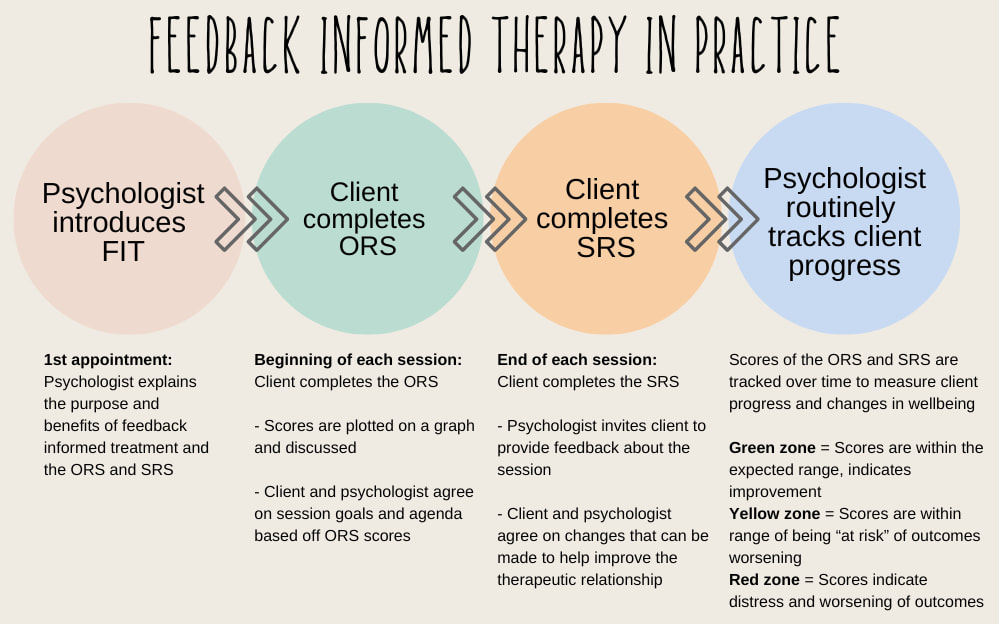|
Abby Elder. Provisional Psychologist Picture this...
An eruption of screaming and fighting pierces your ears. Again. Your eight year old son rushes into the lounge room sobbing and throws himself on the couch next to you. Another fight with his older sister over who gets to choose what game to play together. ‘You are supposed to be having fun and building lifelong memories to be treasured forever!’ You think to yourself. When did having fun become so hard? If your child sometimes appears to be made of glass, try these 9 ways to build resilience, or the ability to recover from the inevitable disappointments and challenges of life. 1.Growth mindset Encourage a practice of gratitude and excitement by asking your child to identify one thing they are looking forward to the next day. 2. Define resilience in age appropriate ways Look for examples in nature like a tree that has continued to grow despite a concrete barrier. Or name some models of a can do attitude in literature or film. 3. Practise the calm How do you feel when you are told to just calm down? Most adults know the bubbling rage that this phrase can instill yet we continue to use this command when a child is overwhelmed. Instead try practicing the calm with your child every day, like taking a vitamin supplement. This can be a three minute body scan that encourages your child to be more aware of body sensations that are signals they need help. Or try green grounding, which encourages a short connection to nature. Think setting a five minute timer on your phone and going cloud gazing. The key to practicing the calm is scheduling it every day at a time when it is achievable. 4. Check your own reactions and expectations Emotions are catching. Children can perceive when we have unrealistic expectations that we are placing on them. Such as, my child should be invited to every birthday party thrown by every classmate. Or, I am a terrible parent because my child is struggling to comprehend long division. Try practising some short, self compassion meditations that will build your own resilience. 5. Encourage problem solving, don’t solve the problem Resiliency is not a force field that repels life’s problems. It’s the confidence that no matter what problem we are faced with there are solutions. Problem solving just like any skill needs to be learned. Parents often want to swoop in and solve their child’s problems, however this is taking away the opportunity from your child to learn how to solve their own problems. 6. Skill building missions Plan for ways your child can prove to herself she is a problem solver. Let her pay for the produce next time you duck into the shops. Bite your tongue when your five year old picks an outfit that slightly clashes, at least they are dressed! Encourage your 11 year old to create a menu of family dinners. 7. Call out your own fragile behaviour, but don’t shame it Name when you are feeling a bit fragile, and role model problem solving through the uncomfortable feelings to your child. 8. Acknowledge the good when it happens We are good at identifying the tough times but we often do not pause and say how great things are going. By acknowledging the good we remind our children that nothing is permanent, the bad times come, and then so do the good times. 9. Encourage accountability Resiliency is about doing what we can with what we have. Encourage your child to name what is in their control the next time they are having a tough time. This will make the path to solutions more clear. For support for you or your child/ren, learn more about our online parenting program Kara Vermaak. Provisional Psychologist We all have thoughts, that’s part of what makes us human. Sometimes these thoughts are pleasant and helpful, but sometimes they’re unhelpful and unpleasant. Our natural response may be to want to get rid of those unhelpful thoughts as soon as we can. Why would we choose to feel pain and discomfort? Unfortunately, trying to control these thoughts often has the opposite effect. They just keep coming back. Imagine you’re throwing a party. Everyone is having a great time, but there’s this one unwelcome, uninvited and somewhat obnoxious person who shows up at your house. You’ve decided to take charge, and show them out the door. But despite your best efforts to get rid of them, they keep finding a way back into your house. You become increasingly agitated as you see them annoying your guests, but they just won’t stay away. You soon realise that trying to get rid of them is futile. So what could you do instead? 1. Recognize the guest: Just like you would recognize the unwelcome party guest, recognise the unhelpful thought without judgment. Acknowledge that it's there and that it's causing you discomfort or distress. 2. Accept the guest's presence: Rather than trying to force the guest out, accept that they're there for now. Recognize that, just like the guest at the party, the unhelpful thought may stick around for a while, even if you don't want it to. 3. Observe the guest without judgment: Instead of getting caught up in the guest's behaviour, observe them without judgement. Notice what they're doing and saying, but focus on what you’re doing instead. 4. Let the guest be: Just like you might let the unwelcome party guest be, let the unhelpful thought be. Don't try to change it or control it, just observe it and let it exist without getting caught up in it. Eventually, you find that you’re so busy having fun, that you’ve forgotten all about the unwelcome guest, and your friends don’t seem too bothered by them either. After a while, they get bored, say goodbye and leave. Remember that just like an unwelcome party guest, unhelpful thoughts may arrive uninvited and unwanted, but they don’t have to define your experience. By accepting their existence and letting them be, they eventually pass by as just another thought. Book an appointment with Kara or one of our friendly psychologists
Eating disorders are a serious mental illness that affect many individuals of all ages, but they are especially prevalent and dangerous among teenagers. Research shows that 75% of people diagnosed with Anorexia Nervosa and 83% of people diagnosed with Bulimia Nervosa are between 12 and 25 years of age.* The outcomes of an eating disorder can cause serious harm. There are several types of eating disorders, but some of the most common are anorexia nervosa, bulimia nervosa, and binge eating disorder. Below is a brief overview of each disorder and some common warning signs:
*Volpe, U., Tortorella, A., Manchia, M., Monteleone, A.M., Albert, U., & Monteleone, P. (2016). Eating disorders: What age at onset? Psychiatry Research. April. 225-227. If you or your child are struggling with any of these warning signs, you might be feeling worried and unsure of what to do. Remember that you are not alone and there is support to guide you through this tricky time. Visit your GP to start your journey to eating disorder management and recovery, and then book an appointment with one of our psychologists or dietitians for therapy. Grounding is a technique used to help individuals cope with feelings of anxiety, stress, or dissociation by focusing their attention on the present moment and the physical sensations in their body. One common approach to grounding involves engaging the five senses: sight, sound, touch, smell, and taste. The following is an explanation of the benefits of the five senses grounding technique:
Here is an easy way to practice 5 senses grounding:
Overall, engaging the five senses can help individuals feel more grounded and connected to the present moment. This technique is often used as a coping strategy for individuals and can be practiced in a variety of settings, from the comfort of your own home to a busy public space.
Liz Greig. Provisional Psychologist  1.TikTok TikTok was created in 2016 as a social networking app designed to share user generated videos. Users can create and upload their own videos and browse and interact with other users' content. The TikTok ‘feed’ contains videos that are algorithmically selected based on its users past views and interest. Data from a 2022 survey conducted by PEW Research Centre showed that 67% of teens are actively using TikTok! Currently making TikTok the world's most popular social media platform. TikTok has been the subject of controversy recently as it has been critised for its use of algorithims that can push inapporiatye consent to users, including children and teens. TikTok can however be used for activism, education and other postivie purposes. Parents and guardians should be aware of the risks and benefits of the app, and monitor their teen's use of the app to ensure their safety and well-being.The following link (Parent’s Ultimate Guide to TikTok) is a useful resource to find out more about the functions of TikTok, how content is posted/ viewed and information about its safety features. https://www.commonsensemedia.org/articles/parents-ultimate-guide-to-tiktok  2. Instagram Instagram is a social media app created in 2010 as a way for users to post photos and videos, follow popular accounts and friends, and send private messages. Users can create and follow hashtags, join groups and communities, and share content through Instagram Stories and Reels. Instagram also offers features like Instagram Live, which allows users to broadcast live video to their followers, and Instagram Shopping, which enables users to shop directly from the app. The minimum age requirement to create an Instagram account is 13 years, however, like many social media apps there is no age verification process that eliminates people under 13 years from downloading and using the app. The type of content your teen might be seeing on Instagram varies depending on their personal preference and the accounts they follow. Some teens might be seeing content posted by friends, influences and/or meme accounts (accounts that focus on making funny, amusing content). Instagram does have a ‘sensitive content control’ setting, that allows users to choose how much potentially upsetting or offensive content they might see from accounts they do or don’t follow. Parents can also get updates about who their children are following, followed by and can set usage limits. It is important to note that Instagram accounts are made public by default, so if you would prefer your child's account to be private, they’re going to have to turn the privacy settings on manually. The following link (Parents’ ultimate guide to Instagram) is a helpful resource to find out more about how Instagram works and its potential risks and benefits. https://www.commonsensemedia.org/articles/parents-ultimate-guide-to-instagram  3. Snapchat Snapchat was created in 2011 as a way to share photos privately between two people. Now it can be used for a range of purposes, including sending videos, live video chatting, messaging, and sharing a ‘story’ that is broadcasted to all your friends. Other features include the ability to share your live location on a world map. Photos, videos, and messages sent through snapchat will disappear after they’re opened or after a default period of time (e.g., 24 hours). 13 years is the minimum age required to sign up for snapchat, however there is no age verification process currently in place when creating an account. Snapchat does have some parental controls through the privacy settings that allows parents to monitor their child’s snapchat activity. The following link (Is Snapchat Safe for Kids? A Parents’ Guide to Snapchat) can be used to find out more information about Snapchat, its features and how to turn on parental controls. https://www.avast.com/c-is-snapchat-safe-for-kids#:~:text=Age%2013%20is%20the%20minimum,to%20a%20global%20Spotlight%20video.  4. YouTube YouTube is a popular video-sharing platform that allows users to upload, watch, and share videos. It was founded in 2005 and is now one of the most popular websites in the world, with over 2 billion monthly active users. The platform offers a wide variety of content, including educational videos, music videos, tutorials, vlogs, and more. Users can subscribe to channels to keep up-to-date with their favorite content creators, and can also create their own channels to share their own videos. YouTube offers a number of features to enhance the user experience, including comments, likes, and dislikes, playlists, and personalized recommendations. Youtube has implemented some safety features to help protect teen users, including age restrictionds on certian vidoes and content, community guidelines (helps prohibit content that includes hate speech, harrassment or violence), comment moderation, and family link (parental controls).  5. Discord Discord is a communication app designed for gamers but has since expanded to other communities. The app was launched in 2015 and allows users to create and join servers, which are essentially chat rooms for groups of people with common interests. These servers can be public or private and can include text, voice, and video chat features. Discord also allows users to share files, links, and media within a server, making it a convenient platform for group projects and collaborations. Discord has implemented several safety features for teen users incluidng, age gating (minimum age of 13 years to create an account), content filtering, two factor authentication, and moderation guidelines. However, even with these safety features there are risks of teens encountering inappropriate content, cyberbullying, and other security issues. The following link (Parent’s Ultimate Guide to Discord) can be used to find out more information about Discord, its features and how the privacy settings work. https://www.commonsensemedia.org/articles/parents-ultimate-guide-to-discord It's important for parents to have open and honest conversations with their teens about online safety and responsible social media use. Parents should also be aware of the risks and benefits associated with their teens using certain apps. Common Sense Media (https://www.commonsensemedia.org/) is an organization that provides information, reviews and ratings for apps, movies, tv shows, books etc. so parents and caregivers can make informed decisions about the type of content their children are exposed to.
Tamsyn White. Principal Psychologist It's completely understandable to feel frustrated and overwhelmed when your child is behaving in ways that are the opposite of what you would like, despite your best efforts. Remember that as a parent, it's important to approach these situations with warmth, understanding, and a willingness to learn and grow. It can be helpful to take a step back and re-evaluate your expectations for your child's behaviour. Remember that all children make mistakes and may exhibit challenging behaviours from time to time. Sometimes as parents we our expectations of our children can fall outside of their abilities - by setting developmentally appropriate expectations, you can help your child feel more confident and supported. When your child is behaving in challenging ways, it's important to remain calm and respond in a consistent manner. Reacting impulsively or losing your temper can escalate the situation and make it more difficult to address the behaviour. Instead, try to stay calm and firm in your response, and be consistent in your expectations and consequences. Dr Daniel Siegel, a renowned psychiatrist and author who specialises in child development and neuroscience, has popularised the phrase "connection before correction." This means that before we try to correct or discipline our children, we need to focus on building a strong connection with them. As parents, we want our children to listen to us, respect our authority, and follow rules. However, in order for children to feel willing to listen to us, they need to feel a strong connection with us first. Connection refers to the quality of the relationship between the parent and the child. This includes trust, understanding, empathy, and communication. We often make the mistake of FIRST correcting a child’s behaviour (by telling them off, punishing them, or trying to immediately make them cease their behaviour), and THEN later try to understand what happened to cause them to behave this way. This makes sense to our adult brains, but is unfortunately in the wrong order for children to be able to make sense of. When we instead prioritise connection before we provide corrective responses, we are showing our children that we care about them as individuals, that we want to understand them and what’s upsetting them, causing them to experience big emotions and behaviours, and that we are committed to building a strong and positive relationship with them. By doing this, we create an environment where our children feel safe and supported, which can help them regulate their emotions and behaviour. To put it simply, we need to focus on understanding our children's perspectives, actively listening to them, and showing empathy and compassion towards them. This approach is not only more effective in helping children learn and grow, but also nurtures them to develop into happy, healthy, and resilient individuals. Remember that parenting is a journey, and it's okay to make mistakes and learn from them. By approaching these situations with warmth, understanding, and a willingness to learn and grow, you can help your child develop positive habits and behaviours over time. If you're feeling overwhelmed or unsure of how to address your child's behaviour, consider seeking support from Jessica Cleary’s Calm and Connected Parenting online course, or book a consultation with one of our talented and passionate clinicians. We can provide guidance and support in developing effective strategies for addressing challenging behaviours and strengthening your relationship with your child.
Just like an iceberg, when it comes to behaviour, there's so much more going on beneath the surface.
If we only pay attention to what we see, then we're not considering the full picture. You can't deeply understand an individual action without exploring at least some of those things that are rumbling below the surface. In fact, what goes on underneath is what gives rise to the behaviour that you see. Important motivators of the behaviour of young children include their needs and their feelings. What we don't see that influences behaviour includes things like a child's individual temperament, their emotions at the time, different sensory needs such as lighting and sound sensitivities, developmental capacity and limits, past experience that they bring into the moment, thoughts, internal sensations, executive functioning challenges that can affect planning, impulsivity, memory, physiological needs. All of these things we don’t see, are going to give rise to what we are actually seeing above the surface. When you start to feel challenged or frustrated by your child's behaviours, take some time to consider things on a deeper level. What could be going on below the surface? Our online Parenting Program explores child behaviour at great length with many strategies for you to use to navigate challenging parenting situations Are you feeling physically and emotionally drained? Do you find yourself disconnecting from family or friends? You may notice yourself increasingly needing to take time off work, or lacking the motivation to complete routine tasks.
Sound familiar? If so, you may be experiencing burnout. Burnout is about feeling not enough. It is about feeling empty, devoid of motivation, and beyond caring. Here are some ways to prevent feeling burnt out… 1. Be aware of what you can and cannot control, and focus on problem solving the things you can control Put things into perspective! We often feel demotivated and deflated when things don’t go to plan, however it’s important to remember that we don’t have control over absolutely everything. We may encounter obstacles that were unforeseen and unavoidable. Life happens. Focus on problem solving the things you can influence, and you will feel more accomplished. 2. Simplify your day, and know your limits Ask for help and learn how to say “no”... and mean it! We can’t do everything for everyone, despite what we think! It is important to maintain boundaries with family, friends and/or colleagues. Sometimes you just need to switch off. You can't be available to everyone at all times! 3. Write a to-do list It is important to start each day with a purpose. Each evening, list three tasks that you will aim to complete during the course of the following day. Checking off tasks each day is one of the best ways to feel accomplished and satisfied. 4. Practice mindfulness It is important to take time out of your day to give yourself the chance to ground yourself and come back to the present moment. It's important to routinely take time out to breathe and re-centre. Regular practice will help you feel more in control and be better able to make good decisions. 5. Remember to schedule self care into your week I’m sure you’ve heard it all before, but really, how often you you deliberately schedule in self care to your routine? I’m sure like many, we have good intentions to carve out time for ourselves, but we let other priorities often get in the way. You are doing a disservice to your loved ones by not looking after yourself! Keep it simple...exercise regularly, maintain a well balanced diet, start a new hobby, learn an instrument, keep up with social connections, the options are endless! If this is sounding all too familiar are you are wanting some extra support, please book in an appointment with one of our clinicians Alyce Galea. Psychologist At Hopscotch and Harmony, we value the importance of client feedback and collaborative treatment planning; that is why we have implemented Feedback Informed Therapy (FIT) into our practice.
Feedback Informed Therapy (FIT), developed by Scott Miller, involves the use of two brief surveys: 1) Outcome Rating Scale (ORS) to measure client wellbeing, and 2) Session Rating Scale (SRS) to measure client satisfaction in therapy. At the beginning of each session, your psychologist will invite you to complete the ORS, which asks you to rate how you have been feeling in four areas of your life (personal wellbeing and health, interpersonal relationships, social relationships outside of family, and overall well being). Your psychologist will then discuss the results with you and explore any issues that may have arisen since the previous session. This helps develop goals and an agenda for that session. Every time the ORS is completed, often on an iPad or laptop, a score will be plotted on a graph so that you and your psychologist can track your progress through treatment. The graph helps your psychologist identify any significant changes and can help modify treatment planning to better support your needs. Clients often report that seeing this graph can be particularly helpful when they feel they have not made any progress in treatment, as it provides a bigger picture look at the overall progress that has been made. At the end of each session, your psychologist will invite you to complete the SRS, which asks you to rate how successful you think the session was, and opens up an opportunity to provide your psychologist feedback. Areas to consider include whether you feel you were heard and understood by your psychologist, whether you felt you were both on the same page, and whether you felt your goals were worked towards. Although some clients may find it uncomfortable to provide feedback, research shows that it is incredibly important for clients to feel connected with their psychologist and clients will show better outcomes if the relationship between you and your psychologist is strong. There is no such thing as a “perfect psychologist”, so we do not expect “perfect scores”. The feedback you provide will help the psychologist alter the way they conduct their sessions with you, so that it aligns better with your expectations and how you feel therapy would work best for you. Our psychologists all receive individual supervision and support in how to best implement FIT into their practice. We believe that our use of FIT helps ensure that we can offer the best support and help clients achieve their goals in the most effective way. If you have any questions about Feedback Informed Therapy, please contact our FIT Coordinator Alyce Galea (alyce@hopscotchandharmony.com.au). Hilary Sanders, Psychologist Being a teen can be tough! We all remember what that was like, right? Your hormones are racing, your body is changing, you're figuring who you are, and who you want to be. You want to be unique yet at the same time fit in. Impress your friends, your parents, your teachers, and your "crush". Then throw in the everyday stress of school, home life, increasing demands, and societal pressure. Now, imagine on top of all of this, you are also questioning your sexuality. You've noticed you are not attracted to the opposite sex in the same way as your peers. Maybe you're not attracted to the opposite sex at all. Or both. Or neither. Given attraction to the opposite sex tends to be more common (emphasis on the word common here- do not mistake this to mean "more normal"), you might feel isolated, confused, ashamed, and fear rejection if you feel anything outside of this. Especially during adolescence, when social acceptance and a sense of belonging take priority. The enduring or evolving pattern of one's sexual and romantic attraction to a particular sex is referred to as sexual orientation (or sexual identity). It is important to understand that commonly used categories of sexual orientation (heterosexual/straight, gay, lesbian, bisexual) do not rigidly apply to everyone. Sexual orientation exists on a spectrum, and is unique to the individual. Yes, it all sounds a bit complex, however the conversations you have with your teen don't need to be. Many parents feel conflicted about what to do. What should I say? What if I say the wrong thing? How do I approach my teen, if at all? How we approach sexuality can have a lasting impact on the emotional wellbeing of our kids, so it makes sense to reflect and think about it. And it’s never too soon, or too late, to begin the conversation. Here are some key points to consider when talking with teens about sexual orientation:
Additional resources… - Switchboard (Victoria): http://www.switchboard.org.au/ - Q Life: https://qlife.org.au/ - Kids Helpline: https://kidshelpline.com.au/parents/ - Headspace: https://headspace.org.au/friends-and-family/
As school and work begins for another year, so does the daily ritual of inquiring about our loved one’s day. Children and adults alike give the customary, ‘good’ and the conversation halts before it ever gained any momentum. We can do better!
Here are 7 new questions to ask to avoid that dreaded loop. 1. What went well today? This question is promotes reflection on our strengths and generates gratitude. To take this further ask the question three times over and follow it with the question, ‘Why did it go well?’. 2. Who helped you today? Encourage your child to identify and reflect on their social supports 3. Who did you help today? These questions create a sense of community and connection with peers. For parents, these questions may be helpful in identifying the positive relationships in your child’s life that you can encourage to grow. 4. What are you learning at the moment? 5. What are you working on at the moment? 6. What did you find challenging today? All of the above are open-ended questions. Unlike closed questions - such as ‘How was your day?’, or, ‘Did you have a good day?’ - these open-ended questions are difficult to answer with just one word. 7. What would your teacher/boss say about you? Another way of disrupting the default reaction to label our day with basic adjectives is by changing the perspective. Stepping outside ourselves provides this circuit breaker and prompts a deeper level of insight that can get us thinking and communicating. Jessica Cleary, Psychologist How did your kids go at the beginning of the new school year? If you do kinder or school drop-off you will have noticed some kids take the new challenge in their stride, whereas others have a much harder time with the transition and separation from their parents.
Maybe you found yourself with a little one who was crying and clinging and begging you not to leave. I feel for you if this was the case – it’s so hard! Or maybe your child complained of tummy-aches or headaches before leaving home. This is a common symptom of anxiety. It’s fairly common for some kids to have troubles adjusting to school. Although there is no magic solution when supporting your child through separation anxiety, here are some ideas for you: Find a friend It helps immensely when kids have a friend at school. Ask the teacher who your child seems to play with the most and introduce yourself to the parent at either drop off or pick up. Arrange a play date over at your house or a park to help nurture that relationship. Talk about it ahead of time If you know that tomorrow is likely to be another morning of tears and clingy behaviour then talk about it today when you are both feeling calm and relaxed. When children fear something, they need the opportunity to express and feel their feelings. Some of their worries or concerns may seem small or insignificant to us, but for them they are very real and should be believed and respected. It is important to acknowledge that the feeling of worry is very real for your child. After you've validated their feelings, then gently move to problem solving. Remind them of the fun parts of the day like playing with a friend or lunchtime (if this is fun for them). Remind them that after a little bit of upset they were able to enjoy the school day and they got to do new and exciting things. Let them know that you will ALWAYS come back at the end of the day to pick them up (or make sure they know the plan if there is after-school care). Team up with the teacher Work in partnership with the teacher. Experienced teachers have been through this before so are likely to have a few good ideas. If the separation anxiety doesn’t ease after a few days the teacher may be able to give your child a special job to do immediately upon getting to school. This will serve as a transition activity and is something for him to look forward to. Get to school early so the teacher can personally greet your child and take him to the activity. Don’t focus on the separation On the way to school talk about the first thing your child will do once they get in the classroom. It shifts the focus from the separation to the enjoyable activity. This helps them mentally prepare before they are physically at school. They start to visualise the inside of the classroom and can start to get used to the idea of being there. Something like this: “When you go to the reading corner, what book are you going to read first?” or “Which colouring in page will you choose when you get there – the train or the castle?”. Or if you have an arrangement with the teacher (see previous tip) you can talk about this with enthusiasm. Don’t talk about ‘school’ At home in the morning, don’t talk about ‘school’ too much. Talk about ‘reading time’ and ‘drawing’ and 'play time’. Talk about that first activity that he will be doing with the teacher (if you have one planned). The word ‘school’ may currently have a negative, anxiety provoking association for your child so minimise using that work might help if this is the case. Instead talk about the activities they will be doing at school that you know they enjoy. This makes the idea of school more concrete and less abstract. Transitional objects A special note from you kept in their pocket, or matching love hearts drawn on their hand your hand can help your child feel connected to you during time apart. Other issues Sometimes separation anxiety occurs in the context of more generalised anxiety or trauma. Maybe there is a real problem at school that is causing distress. Listen carefully to your child and do a little detective work if you sense there is more to the story. Could it be that they don't know how to ask to go to the toilet? Or they are being bullied? Do they find it hard navigating the school grounds at recess? Listen carefully and get more information from the teacher to help you work out what the underlying problem may be. When to seek professional support Often patience and using the above tips can ease separation anxiety. However, there are times when it is necessary to reach out for additional support. You may need further help if:
Finally Remember, your child isn’t trying to manipulate you in order to stay home. The feelings are real for your child and quite distressing. Although you may not always be able to prevent the separation anxiety, you can always empathise with your child and connect with them with cuddles and snuggles at the end of the day. You wouldn’t be the first parent to cry on your way to work after holding it together at school drop-off. This experience is so very stressful for parents. Look after yourself to help manage your own stress. Sleep (if you're at a a stage of parenting where that's possible!) and eat well and talk to a trusted friend who will listen and support you. Taking care of yourself and allowing yourself your own emotional release will help keep you centred and more emotionally available for your child. Jessica Cleary. Director & Psychologist Your child’s classroom teacher will spend an enormous amount of time with your child – much of your child’s waking hours during the week will be with his or her teacher. The relationships between teacher, parent and child will affect your child’s level of happiness over the school year, so it’s important so start off on a positive note and continue to work together with your child’s best interests at heart.
1. First introductions The first week of school is a very hectic time for teachers who are busy getting to know new students, are planning for the year, and are meeting many parents. Before school on the first day is not the time to corner the teacher and give a run down of your child’s academic history and personal accomplishments. However, make a connection in those first few days by introducing yourself and ask if you could meet at a mutually convenient time to introduce yourself further. In the meantime a short letter to the teacher helps him or her get to know your child. You could list your child’s strength and interests, your goals and hopes for the coming year, and your contact details. It’s a good idea to hold off on the negative stuff (unless it is significant). Highlighting that “Susie can be cheeky” or “Max can be a bit of a terror at times” is probably going to influence the teacher’s first impression of your child. Highlight the positives and the essentials, and you are off to a good start. 2. Keep that communication going Communicate regularly throughout the year. It is important for teachers to know if there are circumstances at home that may affect your child’s behaviour at school. This could be parental separation, a family member’s illness, or even something exciting like a new baby or upcoming holiday. Regular, ongoing communication is essential – don’t rely on the few parent-teacher interviews as a way to connect. Let the teacher know when everything is going right throughout the year – when your child comes home bubbly and beaming with happiness, when your child is enjoying homework projects, when your child tells fun stories about the day. A little note of appreciation can make a teacher’s day (especially if it’s been a challenging one). 3. Dealing with conflict If your child comes home saying how their teacher yelled at them in front of everyone, empathise with their feelings (“gee, that must have felt pretty bad, huh?”) but try and retain a neutral stance until you have more information. Don’t approach the teacher all guns blazing (which sets the stage for conflict). Instead, find a way to ask the teacher if everything is ok. You never know – the teacher may have had a really tough day or something might be going on in the teacher’s personal life. Teachers are humans first, and being supportive is likely to generate the best outcomes for your child. 4. Helping out in class Enormous insight into your child’s learning experience is gained by helping out in the classroom. Offering an hour or two here and there is a nice way to stay connected with what’s happening in the learning environment and to show your child that you and the teacher are working as a team. Even if you can’t come in during the day, you can still offer to help out. You could ask for a job to do at home (e.g., put together a classroom display) and work on it alongside your child while they do homework, or drop in some craft supplies to the class for an upcoming project. If you and the teacher are a team then your child is likely to feel more secure and safe at school and home. By being positive and supportive throughout the year the teacher is likely to be more responsive and helpful when you raise concerns. If we are on the same page as our teachers then our children do better. Have a great school year! Many people tend to find it difficult to differentiate between fear, anxiety and stress. Although all experiences are quite normal, it is important to know the difference so you can seek the most appropriate support if necessary.
Here are a few defining features of the three experiences:
Fear and stress:
Anxiety:
There are three components that contribute to feeling anxious:
We have fear and anxiety in non life-threatening situations because of the way we interpret the situation. If you are struggling with fear, stress or anxiety and are needing some support, please contact the clinic to book in an appointment with one of our psychologists Alyce Galea, Psychologist Emotional intelligence refers to the ability to identify, use, understand and manage emotions in a positive way to relieve stress, communicate effectively, empathise with others, overcome challenges and diffuse conflict.
Emotional intelligence impacts many different aspects of your daily life, such as the way you behave and the way you interact with others. If you have a high emotional intelligence you are able to recognise your own emotional state and the emotional states of others and engage with people in a way that draws them to you. You can use this understanding of emotions to relate better to other people, form healthier relationships, achieve greater success at school, and lead a more fulfilling life. Emotional intelligence consists of four attributes:
Book an appointment with one of our psychologists to learn ways to improve yours or your child's emotional intelligence This time of year means different things for different people. It can be a time where families come together, a time when we are reminded of what might have been, a time of joy or a time of sadness. Emotions are heightened and stress levels can be high.
When our stress levels are running high it doesn’t take much to send us over the edge and get fired up about things that wouldn’t normally bother us.. To keep the rising stress at bay, here are 6 ways to reduce the Chirstmas chaos overwhelm.
The beauty about these ideas is that you can start immediately. They are simple and if you can introduce a couple of them to your days, you are sure to notice a difference in the way you feel. Alyce Galea, Psychologist Acceptance and Commitment Therapy (ACT) is an evidence based approach that is very commonly used at our practice. The core principles of ACT are:
The “Passengers on the Bus” metaphor, and it’s variations, is a popular and effective way to gain new perspective on the impacts of “giving in” to your unhelpful thoughts and discomfort. This video is a play on the metaphor and describes your life journey as a plane ride. Let’s refer to your unhelpful thoughts and difficult feelings as “bossy passengers” on your plane.
If the passengers on your life plane were saying awful things about you and making you doubt yourself how would you feel? Would it be fair to stop the plane to argue with these passengers? What might you miss out on if you “give in” to the bossy passengers and let them fly your plane? What might happen instead if you made space for these unpleasant passengers and continued guiding your plane in the direction you wanted to take? With support from our clinicians, you can start to identify some of these “bossy passengers” and unwanted thoughts and feelings, and learn how to make space for them. It’s almost inevitable to have an argument or disagreement with a friend or partner.
Here are some tips for healthy conflict resolution:
Book in with one of our psychologists for further support Alyce Galea, Psychologist Urge surfing is a helpful technique when your way of dealing with stress and overwhelm is particularly unhelpful, unhealthy or harmful.
For example, if your automatic response to feeling overwhelmed is to over eat, use substances or self harm, then this technique is an important one to learn and practice. The goal of this technique is to delay acting on the urge, until the feeling of the urge goes away. One way to think about an urge is like the urge being a wave and you being a surfer. A surfer doesn’t fight against the wave or run away from the wave, instead, they ride the wave until they reach the shore. Urge surfing is about riding the emotional wave. Not fighting with the need to resist the urge, and not giving into the urge. Simply noticing the urge and letting it run its course. Mastering this technique will take some time, patience and practice. But once you are able to get the hang of it, you’ll be better able to regulate your emotions in a helpful and healthy way. The easiest way to practice urge surfing is to set timed intervals between when you first notice the urge, and when you allow yourself to act on the urge, and then do something during that time to distract yourself and keep you busy. Things you could do to distract yourself could be to:
The more you practice this skill, the easier it will be for you to ride out the urge wave and not let the urge dominate your thoughts. If you are struggling with managing unhelpful thoughts or urges, please book an appointment with one of our psychologists |
Categories
All
|
Hopscotch & HarmonyAt Hopscotch & Harmony Psychology, you can expect compassionate care and evidence-based guidance on your journey to wellness.
With clinics in Werribee and Belmont, as well as providing online counselling to clients who live throughout Australia, our dedicated team of psychologists and dietitians are committed to providing support to children, teenagers and adults. With a focus on understanding your unique needs, we offer tailored solutions to foster growth and resilience. Trust in our experience and dedication as we work together towards your well-being. Welcome to a place where healing begins and possibilities abound. |
Our services |
Contact usHopscotch & Harmony
Child, Teen and Adult Psychology Our Locations:
WERRIBEE: 1/167-179 Shaws Rd
BELMONT: 92 Roslyn Rd AUSTRALIA-WIDE: Online counselling Tel: 03 9741 5222
Fax: 03 8669 4076 Email: admin@hopscotchandharmony.com.au |
Hopscotch and Harmony respectfully recognise the Aboriginal and Torres Strait Islander people as the first Peoples of the continent now called Australia.
We acknowledge the Bunurong and Wadawurrung people of the Kulin Nation, the traditional owners of the land on which we work, and pay our respects to their Elders, past, present and emerging.
© 2024 Hopscotch and Harmony Pty Ltd




























 RSS Feed
RSS Feed
